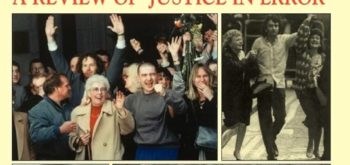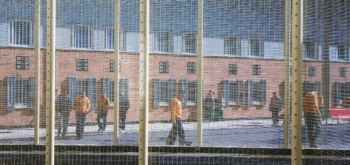Defendants convicted on misleading scientific evidence in 20% of Court of Appeal cases, according to new research
Seven years of court appeals shows that misleading scientific evidence presented at trial – and not necessarily new evidence presented afterward – drove hundreds of overturned criminal convictions, according to a study.
The research, published by Science & Justice, the journal of the Chartered Society of Forensic Sciences and reported in The Timesy, suggests that in at least 20 percent of Court of Appeal cases, defendants have been convicted on the basis of misleading scientific evidence.
After looking at nearly 1,000 cases involving criminal evidence heard in the Court of Appeal, it found that in 218 cases, or 22 per cent, lawyers argued that the conviction was unsafe because of misleading scientific evidence as identified in the transcripts of proceedings. The cases included serious crimes, such as sexual assault, assault, murder, robbery, fraud and drug offences.
The study also found that scientific evidence is generally used to support theories presented to a judge or jury that can be used to secure the conviction of a defendant.
‘What the results (…) mostly show is that wrongful convictions are not always just an issue of flawed science or bad lawyering, but rather, flawed communication and interpretation, an issue both sides should take responsibility for,’ the UCL team writes.
Such evidence is often misunderstood, misinterpreted and miscommunicated in trials, avoiding the issue of the validity or relevance of the evidence and given disproportionate weight. The study concluded that, whether a suspect was ultimately guilty or not did not change the fact that misleading evidence had been used in many of these trials.
Mark Solon, founder of the expert witness training company Bond Solon, told the Times: ‘These new findings are worrying. They show there is a real risk that courts may not reach the correct conclusions as a result of juries either not understanding expert evidence or experts themselves compromising their evidence at the behest of their instructing lawyers.’
Either way, there is a real risk of miscarriages of justice and a need for extra vigilance and strictly enforced codes of practice on the part of judges and professional bodies to ensure high ethical standards and clarity in the way evidence is put before the court.
Mark Solon
Out of the 1,000, a total of 201 convictions were overturned and in 80 cases there was no retrial ordered. The study found that only some 24 percent involved new relevant information presented at the appeal.
Causes of the other ‘unsafe’ rulings were split. Some 36 percent were due to the presentation of evidence in court being generally misleading in the proceedings, including whether it was relevant, had probative value or validity, or was hearsay. Twenty-six percent were due to the directions of the trial judge with respect to those same issues, and with standards of proof. Prosecution and police errors, absence of evidence, and jury issues accounted for another 15 percent of the cases.
It was suggested by the authors, Nadine Smith, Ruth Morgan, and David Lagnado from University College London, that many of the misleading aspects of evidence could have been prevented by making the relationship between evidence and hypotheses clearer.
They added that the occasions where there has been use of misleading evidence could be higher because many cases were excluded from the study sample, either because they did not go to appeal or because errors were not argued to ‘undermine the safety of the conviction’.







